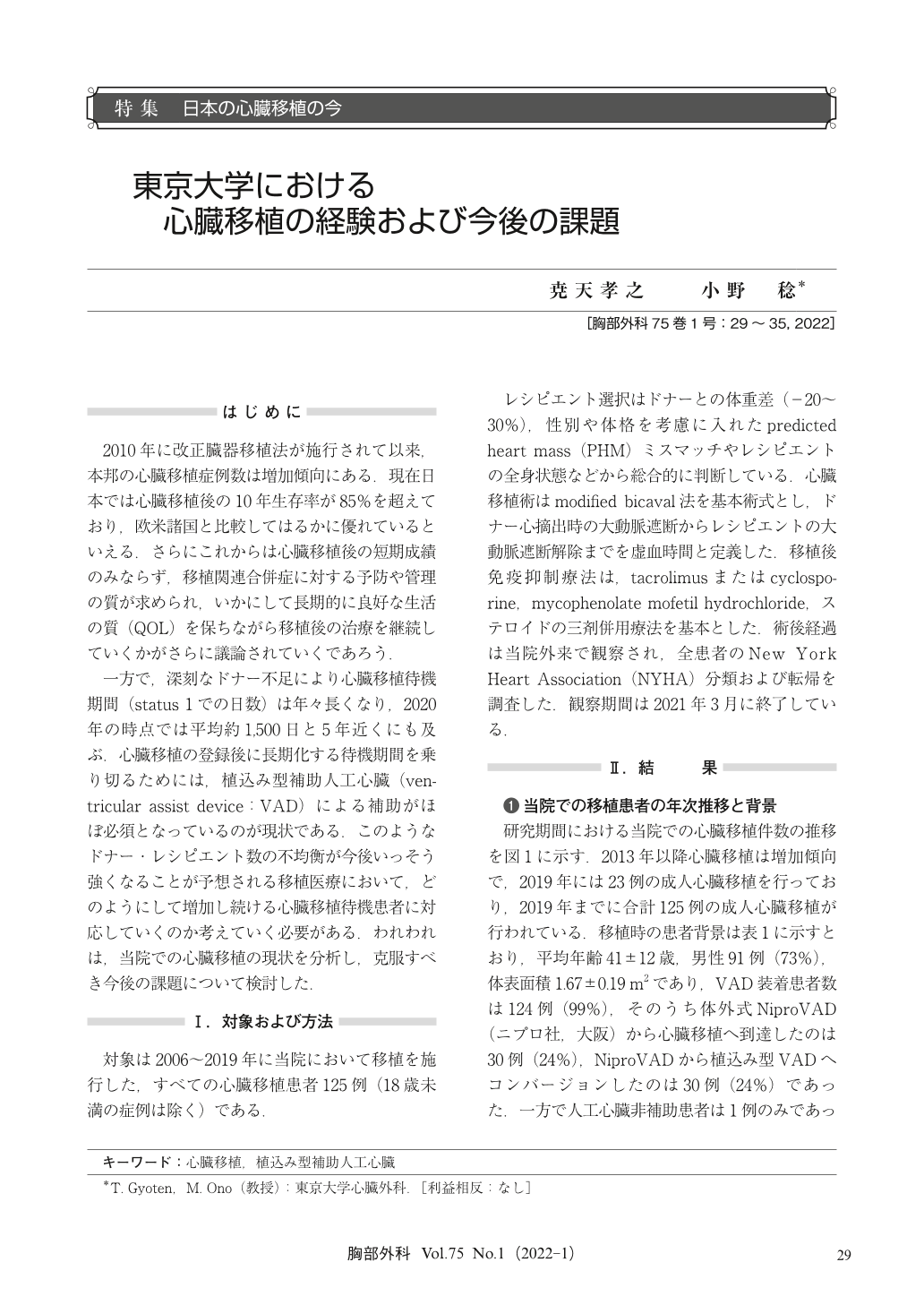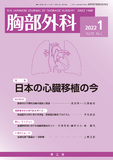Japanese
English
- 有料閲覧
- Abstract 文献概要
- 1ページ目 Look Inside
- 参考文献 Reference
2010年に改正臓器移植法が施行されて以来,本邦の心臓移植症例数は増加傾向にある.現在日本では心臓移植後の10年生存率が85%を超えており,欧米諸国と比較してはるかに優れているといえる.さらにこれからは心臓移植後の短期成績のみならず,移植関連合併症に対する予防や管理の質が求められ,いかにして長期的に良好な生活の質(QOL)を保ちながら移植後の治療を継続していくかがさらに議論されていくであろう.
The number of heart transplantation in Japan has gradually increased since the revised organ transplantation act became effective in July 2010. The long-term survival after heart transplantation is superior, compared to the survival in Europe and United States of America (USA). However, the number of patients on a waiting list is rapidly increasing due to an extreme donor shortage. Because of stagnating heart transplantation, there is a need for an optimal solution to an insufficient donor organ supply. We have experienced 125 adult heart transplantations with acceptable survival rate of over 90% at five years. On the other hand, an expected waiting period is lengthening to far longer than five years. Here, based on our experience, we describe the “real world” outcomes and mention the future aspect of the patients on the waiting list on ventricular assist device (VAD). Our suggestions are 1) to promote VAD weaning in patients with myocardial recovery, 2) to aggressively utilize marginal donors, and 3) to expand the indication to destination therapy.

© Nankodo Co., Ltd., 2022


